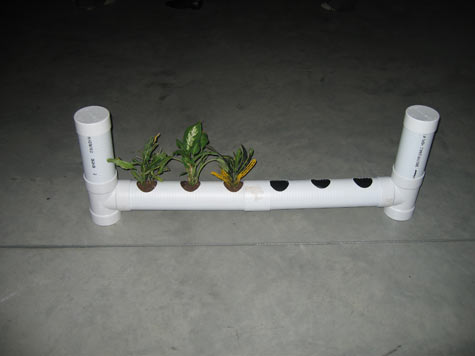The Laboratory at Harvard opens

Vertigrow prototype
What would your heart sound like if it played music? How much hunger can be cured with growing vertical plants? These questions and more were addressed at the "The Laboratory," a three-year experiment in the Northwest Building at Harvard University.
The Laboratory will serve, for the first year, as an exhibition and meeting space for Harvard students to show off their ideas and help other students generate more ideas regarding the intersection of science and art. The last two years the Lab will be open to public programming with their partners the Harvard Art Museum, the American Repretory Theater and the Carpenter Center.
My favorite exhibits was the Gigue exhibit. They really nailed the Lab's mission of breaking down boundaries between science and art. Gigue, named after a Bach music movement, is a computer-based program that acts like a sort of EKG (echocardiogram) that reads your heart beats and produces music from those beats. The music is made using pre-recorded sounds like a train and water, explained creater Yi Wei. After the sounds are created from the participant's heart beats, the music is then played out for the user to hear and their reactions are recorded. Will the person enjoy listening to the music of their own body? Wei said she hopes to install the devices in cafés and clubs, anywhere where people enjoy interacting with music.
Another cool notion brought to life at the Lab was Vertigrow, a stackable plastic-pipe planting system that allows plants to grow vertically rather than horizontally. The very practical problem of not having enough land for urban and third-world people looking for fresh fruits and vegetables is solved by the vertical growing mechanisms. This team really hit a mark of true innovation while solving the global issue of hunger (and the Beacon Hill apartment living problem of only having Whole Foods to shop at for veggies). The multimedia/video presentation for Vertigrow, however, was less educational and reminded me more of a bad Sesame Street skit. But I give them due credit for developing the idea, forming an LLC, and already pilot testing the product in Kenya.
Loving stories and people's experiences, I was also a bit intrigued with the Streetview exhibit as well. Born from the brain of George Zisiadis, Streetview is basically a collection of real candid stories prerecorded and being played on an iPhone about a certain public area, this case was Harvard Yard. You move a little blue dot around the yard in this iPhone app and it plays a this prerecorded personal experiences/memories about the place. It was a cool idea, but I didn't see too many practical applications for the device. It kind of reminded me of a prerecorded audio player you find at museums (you know the kind you punch the numbers into and it tells you what the painting is your looking at), but instead with people's personal stories....which is cool, but not really a big WOW factor.

I was sorely disappointed that Le Whif had taken off early from the Lab as well. I really wanted to experience their claim of "eating through breathing" but I guess the French-based students needed to turn in early due to jet lag or something. There is more information at www.lewhif.com but I didn't get to actually experience any of it so I won't bore you with regurgitation of information.
There were some other disappointments at the Lab, but I will spare singling them out. Safe to say, though, I felt as if some of them belonged more at a high-school science fair than a Harvard laboratory. Overall though, the place is worth a gander and gave off a great feeling of creative inspiration.
















